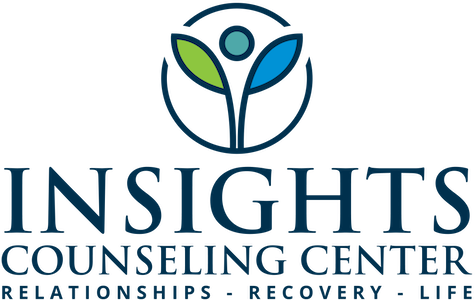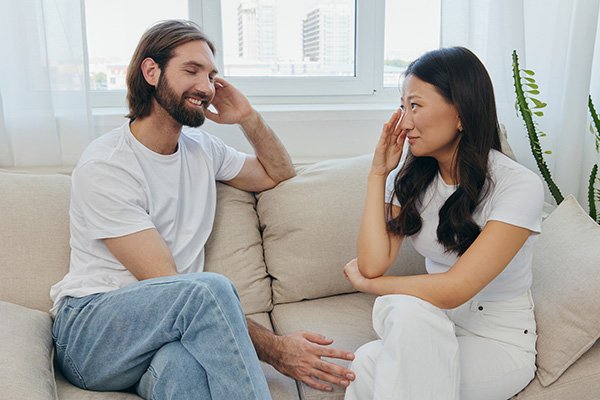The Power of Open-Ended Questions in Your Relationship
Communication is the foundation of every strong relationship. The way we phrase our words—whether through statements, yes/no questions, or open-ended questions—can significantly impact the depth of our connection. While each of these communication styles has its place, open-ended questions play a crucial role in fostering curiosity, collaboration, and emotional intimacy between partners.
Let’s explore the differences between these three styles of communication and see how open-ended questions can transform your relationship.
Statements: Informing, But Not Inviting
Statements communicate facts, emotions, or opinions, but they don’t necessarily invite a response. They can be useful when sharing information, but if overused, they can create one-sided conversations rather than opportunities for connection.
Example:
"I had a really stressful day at work today."
This statement shares an experience but doesn’t encourage dialogue. If the goal is simply to inform your partner, this is fine. However, if you want to foster engagement, you might consider inviting your partner into the conversation by asking a follow-up question.
Yes/No Questions: Limiting Responses
Yes or no questions can be useful when seeking specific information, but they often shut down conversation instead of encouraging it. These types of questions limit responses to a simple “yes” or “no,” leaving little room for exploration or emotional connection.
Example:
"Did you have a good day?"
This question seeks a response but doesn't open the door for much elaboration. Your partner might simply answer "yes" or "no," and the conversation could end there. Instead, you might reframe the question in a way that invites more depth.
Open-Ended Questions: Expanding the Conversation
Open-ended questions encourage deeper discussion by inviting thoughtful responses. They allow partners to share more of their inner world, explore emotions, and strengthen their connection through meaningful dialogue.
Example:
"What was the best part of your day?"
This question encourages your partner to reflect and share something specific. It leads to a more engaging and connective conversation rather than a dead-end response.
How Open-Ended Questions Build Curiosity and Collaboration
Encourages Emotional Depth
Instead of sticking to surface-level exchanges, open-ended questions allow couples to dive deeper into their thoughts, emotions, and experiences. When you ask, "What’s something that’s been on your mind lately?" instead of "Are you okay?" you invite your partner to express themselves more fully.Promotes Mutual Understanding
When you ask questions that require thought and introspection, you create opportunities for learning more about your partner. A question like "How can I better support you this week?" fosters collaboration rather than assumptions.Invites Reflection and New Perspectives
Curiosity fuels growth in relationships. Asking "What’s something you’ve been wanting to try together?" instead of "Do you want to go out this weekend?" encourages partners to explore new ideas and shared goals.Encourages Problem-Solving Together
Instead of placing blame or making accusations, open-ended questions allow couples to work through challenges as a team. Compare:"Why don’t you ever help around the house?" (Which may feel accusatory)
With: "What would make sharing household tasks feel more balanced for both of us?" (Which fosters teamwork)
Transforming Your Conversations: From Closed to Open
Let’s take a look at a common marriage conversation and see how shifting to open-ended questions can deepen connection.
Scenario: One Partner Feels Overwhelmed with Responsibilities
Statement: "I’m exhausted from doing everything around here."
Yes/No Question: "Do you even care that I’m overwhelmed?"
Open-Ended Question: "How do you think we could make things feel more balanced for both of us?"
In this example, the open-ended question avoids blame and instead invites a solution-focused conversation, encouraging both partners to work together toward a resolution.
How to Start Using More Open-Ended Questions in Your Relationship
Replace yes/no questions with questions that start with "What," "How," or "Tell me about…"
Show curiosity by asking follow-up questions like "What makes you feel that way?"
Be intentional about using open-ended questions when discussing emotions, plans, and problem-solving.
Practice with small, daily conversations and notice how they deepen your connection.
When we shift from closed communication styles to open-ended questions, we create space for richer, more meaningful conversations. By cultivating curiosity and collaboration in your relationship, you foster deeper emotional intimacy and mutual understanding.
If you’d like to explore ways to improve your relationship communication, our therapists at Insights Counseling Center are here to help. Schedule a session today to start building stronger, more engaging conversations with your partner.

